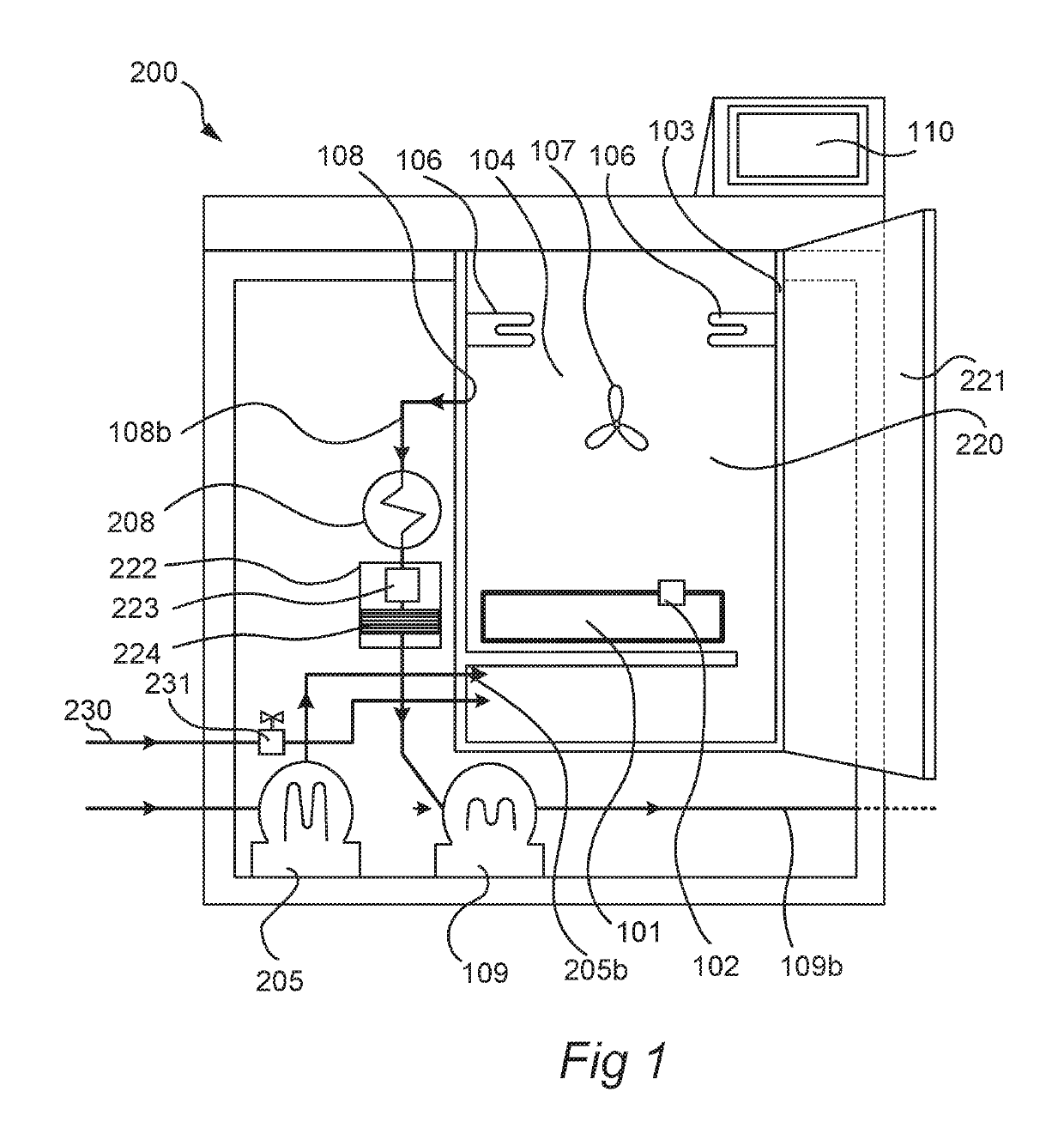Method and oven for vacuum cooking
a vacuum cooking and oven technology, applied in the field of cooking methods, can solve the problems of reducing the strength of the same, not being suitable for many applications, and most available valves being composed of plastic, and achieve the effect of facilitating the protection of the operator
- Summary
- Abstract
- Description
- Claims
- Application Information
AI Technical Summary
Benefits of technology
Problems solved by technology
Method used
Image
Examples
Embodiment Construction
[0069]The present invention will now be described more fully hereinafter with reference to the accompanying drawings, in which exemplary embodiments of the invention are shown. The invention may, however, be embodied in many different forms and should not be construed as limited to the embodiments set forth herein; rather, these embodiments are provided for thoroughness and completeness, and fully convey the scope of the invention to the skilled addressee. Like reference characters refer to like elements throughout the description.
[0070]In the following description, the present invention is described with reference to a food container having a plastic lower portion covered with a plastic film on which a valve is arranged. It is however to be understood that any package able to contain food may be used, such as a plastic bag. The materials of the food package are also exchangeable as long as the characteristics and behaviour is maintained as described.
[0071]FIG. 1 shows a non-limitin...
PUM
 Login to View More
Login to View More Abstract
Description
Claims
Application Information
 Login to View More
Login to View More - R&D
- Intellectual Property
- Life Sciences
- Materials
- Tech Scout
- Unparalleled Data Quality
- Higher Quality Content
- 60% Fewer Hallucinations
Browse by: Latest US Patents, China's latest patents, Technical Efficacy Thesaurus, Application Domain, Technology Topic, Popular Technical Reports.
© 2025 PatSnap. All rights reserved.Legal|Privacy policy|Modern Slavery Act Transparency Statement|Sitemap|About US| Contact US: help@patsnap.com


